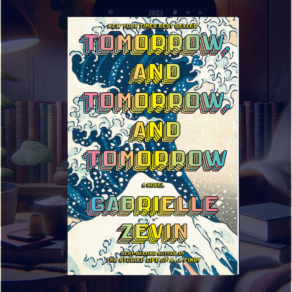Diving into Toni Morrison’s “Beloved” is an invitation to journey through the hauntingly beautiful and complex terrain of America’s past, exploring themes of freedom, memory, and the indelible scars left by slavery. This Pulitzer Prize-winning novel, heralded for its lyrical depth and emotional intensity, offers readers a profound reflection on the human spirit’s resilience and the power of narrative to heal and transform.
In this post, we’ll delve into an extended summary of “Beloved,” highlighting the spellbinding narrative that weaves together history with the intimate experiences of its characters.
Following the summary, we’ll introduce you to the key characters whose lives and stories interlace to form the heart of Morrison’s narrative. Finally, our exploration will culminate in a set of thought-provoking book club questions designed to spark deep and meaningful discussions.
Related: The Bluest Eye Summary
Beloved Toni Morrison Summary
Toni Morrison’s “Beloved” is a profound and deeply moving novel that delves into the heart-wrenching complexities of American slavery and its lasting impact on those who survived it. Published in 1988 and awarded the Pulitzer Prize, this book stands as a towering achievement in literature, both for its artistic merit and its powerful examination of history.
At the core of “Beloved” is the story of Sethe, a woman who, though physically escaped from the chains of slavery, remains imprisoned by its haunting memories and the loss it inflicted upon her. The narrative is set in the aftermath of the Civil War, in Ohio, where Sethe lives with her daughter Denver in a house that is as much a character in the story as the humans it shelters. This house, 124 Bluestone Road, is haunted by the ghost of Sethe’s baby daughter, who died under tragic circumstances. The spirit, which is both a literal and metaphorical manifestation of grief and unresolved past trauma, significantly influences the lives of Sethe and her family.
The novel’s narrative structure is non-linear, weaving together the past and the present in a way that reflects the intrusive nature of traumatic memories. Morrison uses this technique to reveal the backstory of Sethe’s life at Sweet Home, a plantation in Kentucky, gradually unfolding the events that led to her desperate flight to freedom. The story of Sweet Home is one of brutality, dehumanization, and the perverse paradoxes of slavery, where human relationships were corrupted by the absolute power of slave owners and the commodification of people.
Into this already complex and emotionally charged setting enters Paul D, another former slave from Sweet Home, who brings with him his own baggage of trauma but also a glimmer of hope for a better future. However, the fragile stability in Sethe’s life is shattered with the arrival of a mysterious young woman known only as “Beloved.” Her appearance is catalytic, forcing the characters to confront their pasts, and she becomes the focal point around which the novel’s key themes of memory, identity, and healing revolve.
Photo: Amazon
“Beloved” is more than just a historical novel; it’s a lyrical exploration of the human condition under the most inhumane circumstances. Morrison’s language is rich and evocative, capable of conveying profound emotional truths and the indomitable resilience of the human spirit. The novel challenges the reader to face the unspeakable horrors of slavery, not just as historical facts but as lived experiences that echo through generations.
One of the most powerful aspects of “Beloved” is its examination of motherhood under slavery. Sethe’s act of infanticide, born out of a perverse form of love and an extreme desire to protect her child from the horrors she herself had endured, presents one of the novel’s most agonizing moral dilemmas. It forces readers to grapple with the unimaginable choices enslaved mothers had to make in a world that denied them agency over their bodies and their children.
In sum, “Beloved” stands as a seminal work in American literature, a masterpiece that transcends its historical setting to speak to universal themes of loss, love, and the possibility of redemption. Toni Morrison’s skillful storytelling and her ability to give voice to the most painful parts of American history make this novel an unforgettable experience. As a teacher and an educational researcher, I see “Beloved” as an essential text for understanding the complexities of American history, the enduring impact of trauma, and the power of narrative to heal and to humanize. Its themes resonate deeply in today’s world, making it as relevant now as it was at the time of its publication.
Beloved Toni Morrison Characters
Here is a quick overview of some of the novel’s major and notable characters:
- Sethe: Central to the story is Sethe, a proud and tragic mother whose journey from the degradation of slavery to hard-won yet fragile liberty is the heart of the novel. Her past is one of intense inhumanity at the “Sweet Home” plantation. After escaping, the crux of her new challenges lies in the intrusion of a past that is never past. A character who embodies the struggle for self-identity and freedom, she is one of the most evocative examples of the psychological scars left by the institution of slavery.
- Beloved: Arguably the novel’s emotional epicenter, Beloved is a liminal figure who is the resurrected embodiment of Sethe’s unnamed elder daughter. Deceased as a baby, she returns to the story in an attempt to reclaim and understand her horrid and convoluted past. Umbiguously surreal and tantalizing, her story is enshrouded in motifs of the supernatural, evoking a history that is in need of remembrance and unable to be forgotten.
- Denver: Denver is Sethe’s noticeable light of warmth, the youngest child of the account and the only one not to have been born in violence. Teetering on a quiet existence in the book’s setting at 124, Denver bears the brunt of intense relations and the antipathy of the town’s fear. More so, her growth of purpose, decision to leave the setting of her youth, and her written evolution of compassion and desolation are moving narratives, making her the book’s presentation of youth, ambition, and neoteric culture.
- Paul D: Among the men from “Sweet Home,” Paul D is a persona of shackled burning rage and essence, carrying multiple narratives around masculinity, affection, and connection. His itinerary through grief, justice, guilt, and ego are all recited in unique drawings of images and episodes, making him a deeply humane character. Intimacy with the community, loved family, and greater ideas of modern existence all draw a problem for Paul D as he, within every course of the story, seeks ways to regain authority over his life and being.
- Baby Suggs: Baby Suggs, a freethinker and self-anointed minister of spirit and love, is both biological and societal with various drawing to her own story with all her words that elicit an effigy of the strength of community outside the resounding plight of all characters. A related story without much antipathy to former iron grips, she is the beacon of the place, entangling locales and eras to descriptions of support and clairvoyance.
- Schoolteacher: A slave trainer, Schoolteacher, is part of the ever-evoking ego analysis of his book-telling. Sharp, vindictive, and the driving essence of intellectual piracy, he is ever more immoral, all this in works dictating modern darkness or major weepings around interest and command. Principal to Sweet Home, he becomes an expression of fear and damage, a real call into the roots of enforced denigration, identity exposure, and elitism.
Beloved Toni Morrison Book Club Questions
Here are some thought-provoking questions that can help guide your discussion:
- Exploration of Memory and the Past: “Beloved” delves deeply into the impact of past traumas on the present. How do the characters’ memories affect their ability to live in the present? Consider the ways in which Morrison portrays the haunting nature of memory.
- The Significance of the Character Beloved: Beloved is arguably the most enigmatic character in the novel. Who or what do you think Beloved represents? Discuss the various interpretations of Beloved’s identity and her impact on Sethe and her household.
- Themes of Motherhood and Family: Morrison presents a complex picture of motherhood, particularly in the context of slavery. Discuss how the experiences of Sethe, Baby Suggs, and Denver offer different perspectives on motherhood. How does slavery complicate their roles as mothers and their relationships with their children?
- The Role of Community: How does the black community outside of 124 Bluestone Road play a role in the lives of Sethe and her family? Consider the varying degrees of support and ostracism they experience. What does this say about the importance of community in healing and survival?
- The Psychological Impact of Slavery: “Beloved” shows not just the physical but the psychological scars left by slavery. Discuss how characters like Paul D and Sethe cope with their past traumas. What mechanisms do they employ to deal with their memories, and how effective are these strategies?
- The Symbolism of 124: The novel begins with “124 was spiteful. Full of a baby’s venom.” How does the house serve as a character in its own right? Discuss the evolution of the house’s atmosphere throughout the novel and what it symbolizes for the family living within.
- Morrison’s Writing Style: Toni Morrison’s narrative technique in “Beloved” includes a non-linear timeline and stream-of-consciousness narration. How does this affect your understanding of the story and the characters? Discuss how Morrison’s style contributes to the themes of the novel.
- The Concept of Freedom: Despite the Emancipation Proclamation, Sethe and other characters still struggle with their freedom. Discuss the different meanings of freedom portrayed in the novel. How do characters like Sethe, Paul D, and Denver define freedom for themselves?
- Moral Ambiguity and Ethical Dilemmas: Sethe’s act of infanticide is a central moral dilemma in “Beloved.” Discuss how this act and its repercussions are presented in the novel. How does Morrison challenge the reader to understand or empathize with Sethe’s decision?
- The Role of the Supernatural: How does Morrison use supernatural elements to explore themes of memory, guilt, and redemption? Discuss how the presence of the ghost and the character of Beloved influence the narrative and the characters’ lives.
Final thoughts
Reading Toni Morrison’s “Beloved” is like taking a journey into the heart of American history, human resilience, and the complex tapestry of emotions that bind us to our past. Through the extended summary, character exploration, and thoughtfully crafted book club questions, we’ve navigated the layers of Morrison’s masterpiece, uncovering the depths of its narrative and the richness of its themes. “Beloved” stands as a monument in literature, not only for its stark portrayal of slavery’s legacy but also for its profound insights into the human condition.









